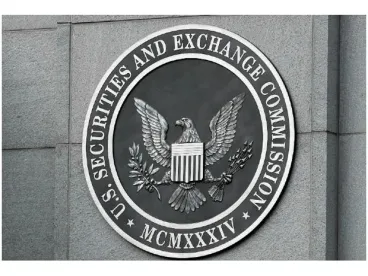The U.S. Securities and Exchange Commission’s Division of Corporation Finance recently released several new Compliance and Disclosure Interpretations (C&DIs) to offer guidance regarding the safe harbor qualifications of qualified institutional buyers under Rule 144A and transactions outside of the U.S. under Regulation S. While the C&DIs released on December 8, 2016 reflect the views of the Staff of the Division of Corporate Finance and are not rules or regulations of the SEC, they are helpful to potential participants in Rule 144A and Regulation S offerings. The new C&DIs are accessible here.
Rule 144A: Safe Harbor for Qualified Institutional Buyers
Rule 144A provides a safe harbor exemption from the registration requirements of the Securities Act of 1933, as amended, for resales of restricted securities to “qualified institutional buyers” (QIBs) as defined in Rule 144A. The new C&DIs (138.05 through 138.10) clarify certain requirements for an entity to be classified as a QIB.
-
Calculating the $100 Million Threshold
To qualify as a QIB under Rule 144A(a)(1)(i), an entity must, for its own account or the accounts of other QIBs, in the aggregate, own and invest on a discretionary basis at least $100 million in securities of unaffiliated issuers. According to the new C&DIs, in calculating the $100 million threshold, an entity may include: (i) securities purchased by the issuer and held on margin, provided that those securities are not subject to any repurchase agreement and (ii) securities owned by the entity, but loaned to borrowers. An entity may not include: (i) securities that it has borrowed but does not own, or (ii) short positions in securities that do not represent an ownership interest.
-
Aggregation among Investment Companies
Investment companies registered under the Investment Company Act of 1940 are permitted to aggregate their investments with those of other registered investment companies within their family of funds under Rule 144(a)(1)(iv) for purposes of calculating the $100 million threshold. The new C&DIs clarify that non-registered investment companies may not aggregate their investments within their family of funds for purposes of meeting the threshold.
-
QIB Status of Limited Partnerships
Rule 144A(a)(1)(v) provides that all equity holders of an entity must be QIBs for the entity to qualify as a QIB. The new C&DIs confirm the Staff’s view that the limited partners of a limited partnership are considered to be the entity’s equity holders for purposes of Rule 144A and that the general partner need not be considered (unless the general partner is also a limited partner) in determining QIB status.
Regulation S: Safe Harbor for Transactions Outside the U.S.
Regulation S provides a safe harbor from the registration requirements of the Securities Act for offers or sales of securities that occur outside of the United States, subject to the satisfaction of certain conditions. Among other things those offers and sales must be executed in offshore transactions and directed outside of the United States. The new C&DIs (276.01 and 277.02 through 277.06) clarify certain requirements of Regulation S.
-
Determining “U.S. Person” Status
An issuer that wishes to take advantage of Regulation S may not direct offers, selling efforts, or sell securities to U.S. persons. For purposes of Regulation S, a “U.S. person” includes any natural person resident in the United States. The new C&DIs clarify that a person who has permanent resident status in the United States (a “Green Card” holder) is presumed to be a U.S. resident. Other individuals without permanent resident status may also be considered U.S. residents for purposes of Regulation S, but an issuer must decide what criteria it will use to determine U.S. residency and apply it consistently. Examples of criteria an issuer may use include tax residency, nationality, mailing address, physical presence, the location of a significant portion of financial and legal relationships of a person and immigration status.
-
European Union deemed “Single Country” under Category 1 of Regulation S
Rule 903 of Regulation S delineates three categories of safe harbor transactions based on the type of securities being offered, whether the issuer is domestic or foreign, whether the issuer is a reporting issuer under the Securities and Exchange Act of 1934, as amended, and whether there is “substantial U.S. market interest” in the securities being offered. The Category 1 exemption under Regulation S applies to securities of foreign issuers and U.S. issuers that are offered and sold in overseas directed offerings. A Category 1 offering must be directed at the residents of a single country (outside of the United States) and be made in accordance with that country’s local laws, customary practices and documentation. The new C&DIs confirm that the European Union may be deemed a “single country” for purposes of meeting this requirement, provided that the local laws, customary practices and documentation used are those of the European Union rather than of a single country within the European Union. This would also apply to an offering of securities by an issuer to its employees.
-
Category 2 Guidance May be Applied to Category 3 Transactions
Issuers relying on Category 3 of Regulation S must establish that offers and sales are not made to a U.S. person or for the account or benefit of a U.S. person. SEC Staff guidance regarding Category 2 notes that, when relying on the Category 2 safe harbor, issuers must ensure (by whatever means they choose) that any non-distributor to whom they sell securities is a non-U.S. person and is not purchasing for the account or benefit of a U.S. person and further notes that safe harbor protection would not be available where offers and sales were made nominally to non-U.S. persons to evade the restrictions. The new C&DIs confirm that this Category 2 guidance is applicable to Category 3 transactions.
-
Electronic Certifications and Agreements
The Regulation S safe harbors generally require certain certifications and agreements (i.e., with respect to the resale of offered securities or U.S. person status in connection with the exercise of warrants). The new C&DIs confirm that (i) issuers and distributors are permitted to use electronic means to obtain those certifications and agreements; (ii) the processes may be implemented by third parties; and (iii) electronic certifications may be relied upon to the same extent as when certifications and agreements are made on paper.
-
Parent Company Guaranty of Debt Securities
Rule 903(b)(4) of Regulation S provides that where an issuer offers and sells debt securities that are fully and unconditionally guaranteed by the issuer’s parent (as opposed to a third party guarantor such as a bank), only the requirements of Rule 903(b) with respect to the offer and sale of the guarantee must be satisfied with respect to the offer and sale of the guaranteed debt securities. In other words, the category of the offering is determined by the status of the guarantor and the guarantee only, without reference to the issuer or the guaranteed debt securities. In the new guidance, the Staff confirmed that Rule 903(b)(4) would also apply, as long as the payment obligation of the parent company is full and unconditional, even in situations when the parent company is the issuer (or a co-issuer) of the debt securities and one or more subsidiaries is a guarantor, or when the parent company is a guarantor and there are one or more subsidiaries which are also guarantors of the securities.
Sujata P. Wiese and Tarik Brooks assisted in the preparation of this article.









 />i
/>i
